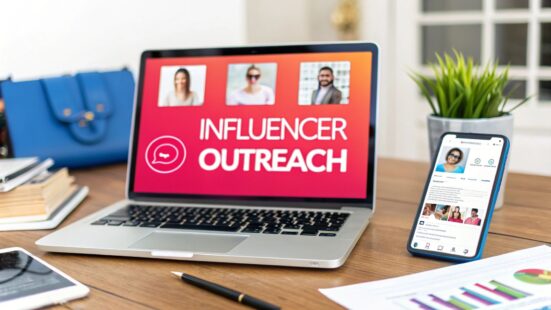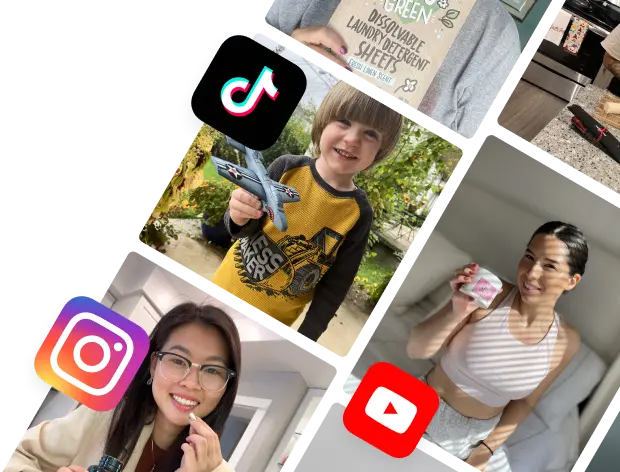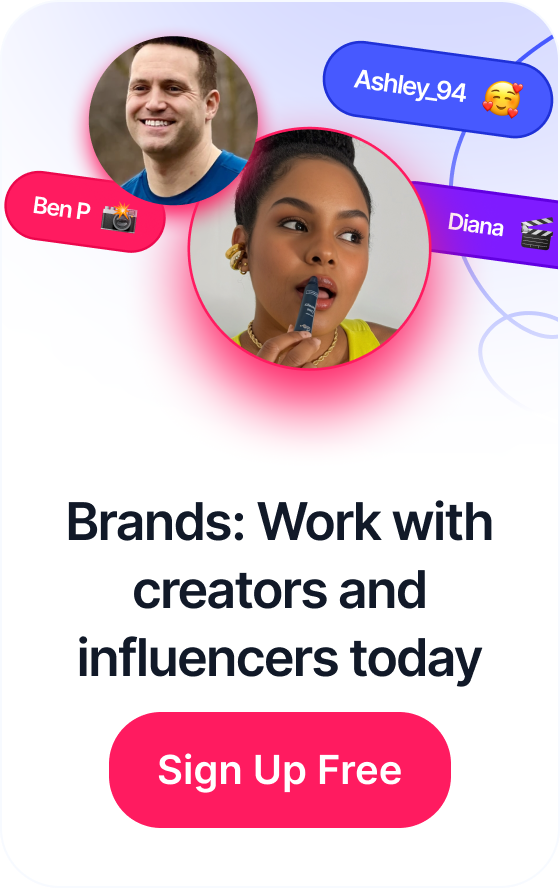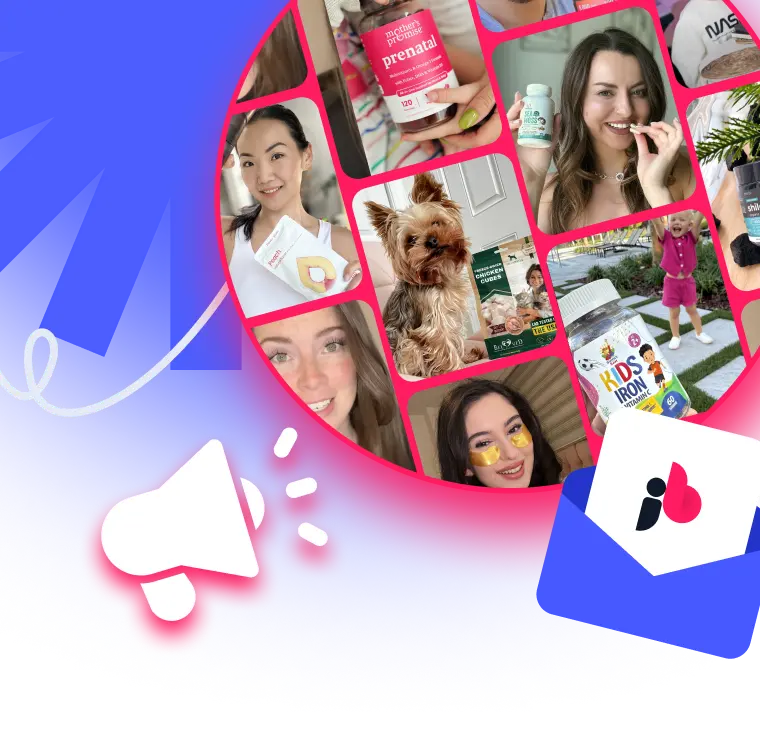 Mastering Influencer Marketing Campaigns
Mastering Influencer Marketing Campaigns
Table of Contents
Navigating Today's Influencer Marketing Landscape
The creator economy has reshaped how brands engage with their target audiences. Authentic partnerships with creators are now prioritized, moving beyond traditional celebrity endorsements. This recognizes the power of creators to cultivate genuine connections with their followers, building trust and driving engagement in ways that traditional advertising often misses. This makes understanding the nuances of the current influencer landscape essential for successful campaigns.
Understanding the Influencer Tier System
A crucial aspect of this landscape is the diverse range of influencers. Each brings their own unique strengths to the table. The system is often categorized into tiers: mega-influencers, with their extensive reach, are comparable to traditional celebrities. Macro-influencers have a substantial following and frequently specialize in a specific area.
Micro-influencers, with smaller but highly engaged audiences, offer a more personalized touch. And lastly, nano-influencers, who are often everyday consumers with a loyal local following, offer exceptional authenticity. Each tier provides unique advantages depending on the marketing objective. A mega-influencer might be perfect for a large-scale brand awareness campaign, whereas a nano-influencer could be better suited for driving conversions within a niche community.
Platform-Specific Trends and Outreach Strategies
Influencer marketing outreach strategies are increasingly influenced by platform-specific trends. TikTok, with its focus on short, viral video content, necessitates a different strategy compared to Instagram, which prioritizes visual storytelling and carefully curated aesthetics. Understanding these platform dynamics is essential for creating content that resonates with the audience and achieves the desired outcomes. Grasping the current landscape is paramount. For a comprehensive approach to your influencer campaigns, consider researching influencer marketing services.
The infographic below provides a visual representation of key metrics related to influencer marketing outreach, including the average response rate, return on investment (ROI), and the growing use of micro-influencer partnerships.

As the infographic illustrates, influencer marketing boasts a substantial average ROI of 500%, and a notable 60% of brands are already incorporating micro-influencer partnerships. This signifies the growing recognition of the effectiveness of targeted influencer collaborations. The average outreach response rate of 30% suggests that connecting with relevant influencers is within reach with the right strategy. This highlights the importance of data-driven approaches in influencer marketing.
Growth of the Influencer Marketing Industry
The influencer marketing industry itself is booming. To better understand this growth, let's look at the following table:
Growth of Influencer Marketing Industry
This table illustrates the remarkable growth trajectory of the global influencer marketing industry over time.
| Year | Market Value (USD Billions) | Growth Rate (%) |
|---|---|---|
| 2020 | 10 | – |
| 2025 (Projected) | 32.55 | >300 |
As the table shows, the industry was valued at approximately $10 billion in 2020 and is predicted to exceed $32.55 billion by 2025, an impressive growth of over 300%. This rapid expansion underscores the rising importance of influencer marketing as a key tool for brands looking to strengthen their market presence and boost engagement. You can learn more about influence marketing. Selecting the right influencer tier and platform, coupled with a thorough understanding of current trends, lays the groundwork for effective influencer marketing outreach and overall campaign success.
Crafting Your Influencer Outreach Blueprint
Moving beyond one-off collaborations, a strategic influencer marketing outreach blueprint is essential for success. This involves aligning influencer partnerships with your specific business objectives. Are you focused on building brand awareness, driving consideration, or boosting conversions?
Each objective demands a tailored approach to influencer selection and campaign structure. For example, a brand awareness campaign might leverage the extensive reach of a mega-influencer. Conversely, a conversion-focused campaign often benefits from the high engagement rates of micro-influencers. This focused strategy ensures your influencer partnerships directly contribute to your overall marketing aims.
Defining Your Target Audience and KPIs
Before contacting influencers, understanding your target audience is crucial. This extends beyond basic demographics. You must identify the platforms they use, the content they engage with, and the influencers they already follow and trust.
This detailed audience analysis helps you select influencers who genuinely resonate with your target market, fostering authentic connections and maximizing campaign impact. Establishing clear Key Performance Indicators (KPIs) is equally important.
These KPIs should directly reflect your campaign objectives. If brand awareness is your goal, impressions and reach are key KPIs. If driving sales is the priority, focus on metrics like conversions and click-through rates.
Setting a Realistic Budget and Timeline
A realistic budget is a vital part of your influencer outreach blueprint. Account for influencer fees, content creation costs, and platform advertising expenses. Influencer marketing has proven highly effective, with over 80% of marketers confirming its positive impact on their campaigns.
The number of influencers brands collaborate with has grown significantly, reflecting the increasing diversity of influencer types and platforms. Nano-influencers, with smaller but highly engaged audiences, represented 75.9% of Instagram's influencer base in 2024. This trend highlights a shift towards more targeted and personalized marketing. Learn more about this trend here.
Developing a practical timeline is also key. Respect both your brand's needs and the creator's workflow. Allocate adequate time for content creation, revisions, and campaign execution. This ensures smooth collaboration and high-quality content.
Balancing Brand Guidelines and Creator Authenticity
While providing brand guidelines is necessary, preserving the creator's authenticity is equally vital. Imagine a musical collaboration: the brand provides the sheet music (guidelines), while the influencer brings their unique instrument and playing style (authenticity) to create a harmonious piece (successful campaign).
This balance ensures the content resonates with the influencer's audience while aligning with your brand's message and values. You might provide guidelines on key messaging, yet allow the influencer creative freedom in how they deliver those messages. This fosters trust and generates more engaging, impactful content.
Building Long-Term Relationships With Influencers
Influencer marketing outreach isn't a one-time transaction. Cultivating long-term relationships with influencers offers significant advantages. This involves open communication, fair compensation, and ongoing collaboration.
Like any successful business relationship, fostering trust and mutual respect is paramount. This can lead to more authentic partnerships, increased engagement, and a higher return on your influencer marketing investment. By nurturing these long-term relationships, brands can create a network of trusted advocates who genuinely believe in their products and services.
Discovering Partners Who Truly Align With Your Brand
Finding the perfect influencers for your marketing campaigns is a crucial step. It's not just about follower counts; leading brands prioritize authenticity and shared values. This involves a deep dive into content quality, audience engagement, and a genuine connection between the influencer and your brand.
Manual Discovery Techniques: Finding Hidden Gems
One effective method is manual discovery. This involves actively searching social media platforms and online communities for creators whose content and audience align with your brand. For example, a sustainable fashion brand might search for creators posting about eco-conscious living and ethical fashion. This hands-on approach gives you a deeper understanding of a creator's style and values. Check out our guide on How to find microinfluencers.
Streamlining Your Search With Advanced Tools
Manual searches are valuable, but influencer discovery can be streamlined with tools. Platforms like JoinBrands offer AI-powered creator matching and customizable filters. This allows you to identify potential partners based on specific criteria, like demographics, content niche, and engagement rates. Remember, though, tools are just that; human evaluation remains vital for true brand alignment.
Evaluating Potential Partners: Looking Beyond the Numbers
When evaluating potential partners, several key factors come into play:
- Content Quality: Does the creator produce engaging, high-quality content that resonates with your target audience?
- Audience Engagement: Do their followers actively engage with their content, or are there signs of inauthentic engagement?
- Brand Affinity: Does the creator's personal brand genuinely align with your brand's values and messaging?
Identifying Red Flags: Protecting Your Brand Image
Identifying potential red flags is just as crucial as finding ideal partners. Some red flags to watch out for include:
- Engagement Manipulation: Sudden spikes in followers or engagement could indicate bought followers or bots.
- Values Misalignment: Past controversies or content clashing with your brand's values can harm your reputation.
- Lack of Authenticity: Creators promoting anything and everything may not be truly invested in your brand.
Thorough Vetting: Avoiding Costly Mistakes
Thorough vetting is essential for successful influencer collaborations. This includes researching past partnerships, reviewing content consistency, and analyzing audience demographics. This process helps prevent costly mistakes and fosters a strong partnership.

To help you effectively evaluate potential influencer partners, we've created a comparison table outlining key factors and potential red flags.
Influencer Evaluation Criteria Comparison
This table compares different factors to consider when evaluating potential influencer partners for your marketing campaigns
| Evaluation Factor | What to Look For | Red Flags | Importance Level |
|---|---|---|---|
| Content Quality | High-quality visuals, engaging storytelling, valuable information | Low-quality visuals, inconsistent posting, plagiarized content | High |
| Audience Engagement | Authentic comments, meaningful interactions, high engagement rate | Generic comments, sudden spikes in followers, low engagement | High |
| Brand Affinity | Shared values, relevant content, genuine interest in your brand | Past controversies, values misalignment, promoting competing brands | High |
| Reach | Number of followers, potential audience size | Bought followers, fake accounts, irrelevant audience | Medium |
This table highlights the importance of looking beyond vanity metrics like reach and focusing on qualitative factors like content quality, audience engagement, and brand affinity.
By combining manual discovery with smart tools and prioritizing thorough vetting, you can build a strong influencer network. This network should consist of partners who genuinely represent your brand and resonate with your audience. This strategic approach leads to impactful collaborations and long-term campaign success. It ensures your partnerships are not just transactional, but build real connections that benefit both your brand and the creator.
Creating Outreach Messages That Actually Get Responses
The success of your influencer marketing outreach depends heavily on that crucial first impression. Generic, impersonal messages often end up ignored. A personalized and thoughtful message, however, can be the spark that ignites a valuable partnership. This means learning how to create outreach messages that truly connect with creators.
Personalization Is Key: Show You've Done Your Homework
Influencers, just like everyone else, appreciate genuine interest. Before you send that message, take some time to understand their content, audience, and values. Mentioning a specific post you liked, or referring to a shared interest, shows you’ve done your research and aren't just blasting out a mass email. This personal touch significantly increases your chances of a response. For example, instead of a simple "I love your content," try "I particularly enjoyed your recent video on sustainable fashion – the tips about thrifting were fantastic!" This proves you’ve actually engaged with their work.
Communicating Your Value Proposition: What's in It for Them?
While showing appreciation is important, clearly communicating your value proposition is equally vital. Explain how partnering with your brand will benefit the influencer. Beyond monetary compensation, consider offering access to exclusive products, increased exposure to a new audience, or opportunities for creative collaboration. Think of it as a mutually beneficial relationship where both sides gain something valuable.
Platform-Specific Messaging: Tailoring Your Approach
Different platforms call for different outreach strategies. A direct message on Instagram might be effective, while a formal email may be better for a YouTube creator. Adjust your tone and message to fit the platform. This shows respect for the influencer’s preferred communication method and understanding of each platform’s nuances. Also, remember platform character limits and adjust your message accordingly.
Crafting Attention-Grabbing Subject Lines: Making the First Impression Count
Subject lines are the gatekeepers of your email inbox. A compelling subject line can make an influencer open your email, while a generic one might send it straight to the trash. Try using keywords that grab attention, like "Collaboration Opportunity" or "Partnership Proposal," and personalize them with the influencer's name or niche.
Effective Follow-Up: Respecting Creator Boundaries
If you don't hear back within a reasonable time, a polite follow-up is perfectly acceptable. But avoid excessive follow-ups, which can seem pushy. A good rule of thumb is to wait at least a week before following up. This shows professionalism and respects the influencer’s busy schedule.
Learning From Examples: What Works and What Doesn't

Analyzing successful outreach examples provides valuable insights. Likewise, understanding common mistakes can help you avoid pitfalls. For example, a generic template instantly signals a lack of effort. Influencers are individuals who deserve personalized communication. By treating them with respect and genuine interest, you can build strong, mutually beneficial partnerships. You can learn more about building influencer relationships here.
Nurturing Influencer Relationships That Last
Influencer marketing outreach involves more than just sending a pitch and crossing your fingers. The most successful brands understand the importance of building authentic, long-term relationships with creators. This shift from one-off engagements to ongoing partnerships allows brands to leverage the genuine influence creators have built with their audiences.
Establishing Mutual Expectations and Fair Compensation
Just like any successful business relationship, influencer partnerships depend on clear communication and mutual respect. Establishing clear expectations from the beginning is essential. This includes frank discussions about deliverables, timelines, and payment. Developing fair compensation models that recognize the creator's value, time, and effort is also crucial. This means going beyond simply sending free products and considering factors like the time spent creating content, audience reach, and the overall value the influencer brings.
Implementing Collaborative Workflows
Effective collaborations require workflows that respect both the brand's guidelines and the creator's unique skills. To improve your influencer outreach, consider using automated email writing to streamline communication and maintain consistent contact. This collaborative approach could involve joint brainstorming sessions, giving the influencer creative freedom within set brand guidelines, and incorporating feedback from both sides. Think of it as a true partnership where everyone contributes their strengths to create something remarkable.
Building Trust Through Communication and Feedback
Open and honest communication is the foundation of trust. Regularly checking in with influencers, providing constructive feedback, and being responsive to their needs strengthens the relationship. Implementing clear feedback mechanisms ensures everyone is happy with the content and campaign direction. This consistent dialogue keeps everyone aligned and allows for adjustments throughout the collaboration.
Leveraging Relationship Management Systems
As influencer partnerships grow, using a relationship management system becomes vital. This could be a simple spreadsheet to track communication history and campaign details, or a dedicated platform like JoinBrands offering integrated communication, project management, and payment processing. This organized approach helps nurture relationships and makes collaboration smoother.
Navigating Exclusivity Requests and Potential Challenges
Sometimes, brands might ask for exclusivity from influencers, especially for particular campaigns. This needs careful consideration, taking into account the influencer's other commitments and their overall brand identity. Addressing potential challenges proactively, such as creative disagreements or campaign performance concerns, is also important. Open communication and a collaborative approach to problem-solving can help navigate these situations effectively. It's wise to have a plan for managing unexpected issues to help maintain a strong relationship.
Looking towards the future, influencer marketing continues to grow. By 2025, 59% of marketers plan to increase their influencer partnerships, fueled by changing consumer behavior and the emergence of new social platforms. This growth is reflected in the predicted $9.29 billion spend on influencer marketing in 2025, a 14.2% increase from 2024. More than 60% of marketers plan to use AI in their campaigns, highlighting its growing importance in influencer selection, content optimization, and performance improvement. This reinforces influencer marketing's place as a key marketing strategy. You can find more detailed statistics here. Building lasting influencer relationships requires a commitment to mutual respect, open communication, and a genuine appreciation of what everyone brings to the table. This builds loyalty and fosters a collaborative environment that benefits both brands and creators.
Measuring What Actually Matters in Influencer Campaigns
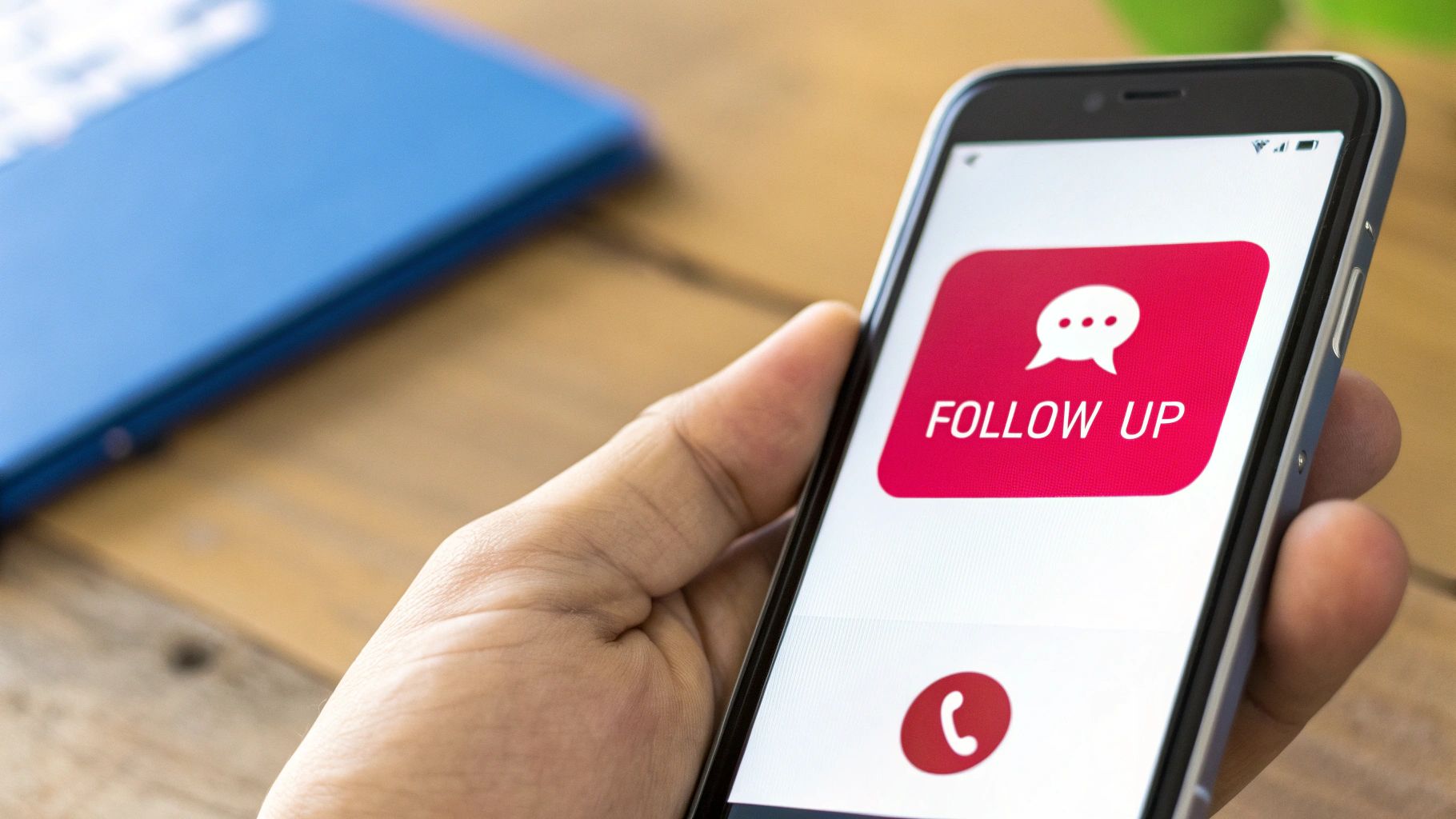
Gone are the days when vanity metrics like follower count were the gold standard. Today, brands recognize that successful influencer marketing hinges on metrics tied to real business results. This means digging deeper than surface-level numbers and focusing on what truly moves the needle. This section explores the most important metrics for evaluating your influencer marketing outreach.
Quantifying Success: Tracking Key Metrics
Effective influencer marketing campaigns rely on a balanced approach using both quantitative and qualitative metrics. On the quantitative side, impressions show how often your content is displayed, providing valuable insights into brand visibility. Engagement, including likes, comments, and shares, reveals how actively your audience interacts with your content. Finally, conversions, such as website visits, purchases, or sign-ups, offer the most tangible measure of campaign effectiveness.
Tracking these metrics across different platforms and influencer types helps you understand audience preferences and pinpoint winning strategies.
Beyond the Numbers: Assessing Qualitative Impact
Numbers alone don't paint the full picture. Qualitative metrics provide a richer understanding of your influencer marketing outreach campaign's impact. Sentiment analysis helps you gauge the overall tone of audience reactions, providing a glimpse into brand perception. Evaluating the quality of the content is also crucial. Is it engaging? Is it informative? Does it reflect your brand's values? Finally, understanding the campaign's influence on overall brand perception is key to long-term success. This means looking beyond immediate sales and focusing on sustainable brand building.
Implementing Effective Attribution Strategies
Understanding which influencer activities directly contribute to your goals requires proper attribution. Custom tracking parameters added to URLs allow you to monitor website traffic originating from specific influencer posts. Unique promotional codes create a direct link between influencer promotions and sales. Leveraging platform-specific analytics dashboards, such as those offered by TikTok, provide granular data on audience demographics, engagement patterns, and content performance. This data-driven approach clarifies the influencer's role in achieving your marketing objectives. You might be interested in: How to master influencer marketing best practices.
Overcoming Measurement Challenges and Optimizing Future Campaigns
Measuring influencer marketing success presents some inherent challenges. Inconsistencies in platform metrics, difficulty tracking offline conversions, and the increasing presence of fake engagement can cloud accurate assessment. However, combining the techniques discussed above helps mitigate these issues, providing a clearer view of your campaign performance. This data, in turn, informs future collaborations, allowing you to refine influencer selection, content strategy, and outreach methods.
Sharing performance data with your influencer partners strengthens relationships and fosters collaboration. This transparent approach builds trust and creates a shared understanding of successes, allowing both parties to learn and grow together. This continuous optimization ensures your influencer marketing outreach remains effective and delivers measurable results.
The Evolution of Influencer Outreach: What's Next
The influencer marketing world is in constant motion. Strategies that were effective yesterday might not be so tomorrow. This necessitates a dynamic approach, requiring brands to constantly adapt their influencer outreach to stay ahead. Let's explore some of the key trends and innovations shaping the future of creator partnerships.
The Rise of Authenticity and Transparency
Today's consumers are discerning and easily recognize inauthentic partnerships. This heightened awareness has created a demand for genuine connections between creators and their audiences. Authenticity and transparency are no longer optional but essential. Smart brands are responding by prioritizing genuine storytelling and embracing the creator's unique voice. Moving away from heavily scripted content fosters trust with consumers and drives stronger engagement. An influencer's true value now lies not just in follower count, but in the genuine passion they demonstrate for the brands they represent.
Crafting Platform-Specific Content
Every social media platform has its own distinct culture and content style. TikTok thrives on short, viral videos, while Instagram favors high-quality visuals. A one-size-fits-all content approach simply won't work. Brands need to tailor their influencer marketing strategies to each platform. This means understanding the nuances of each platform and partnering with creators who excel at creating platform-native content. By doing so, brands can craft campaigns that truly resonate with their target audience on each specific channel.
Integrating E-Commerce Functionalities
Platforms like TikTok and Instagram are increasingly incorporating e-commerce features, enabling in-app purchases. Brands are capitalizing on this trend by partnering with influencers to boost sales through shoppable posts, live shopping, and affiliate links. This seamless blend of content and commerce simplifies the purchase journey for consumers, making influencer marketing a powerful direct sales channel. This direct connection between discovery and purchase is transforming how brands leverage influencer partnerships.
Adapting to Regulatory Changes and Data Privacy
The influencer marketing industry is under increasing scrutiny regarding disclosure and data privacy. Regulations, such as the FTC guidelines, mandate clear disclosure of sponsored partnerships. Growing consumer awareness of data usage necessitates increased transparency from brands. Prioritizing compliance and open communication with influencer partners ensures everyone is aligned on disclosure and data privacy best practices.
Streamlining Partnerships with Technology
Technology is revolutionizing the influencer marketing process. AI-powered matching tools, such as those offered by JoinBrands, connect brands with relevant creators based on specific criteria like audience demographics, content niche, and engagement rates. Performance prediction tools empower brands to forecast campaign results and optimize spending. These advancements create a more efficient and data-driven partnership process, maximizing return on investment.
The Power of Values-Based Partnerships
In today's world, consumers expect brands to have a purpose. This has led to the rise of values-based partnerships in influencer marketing. Brands are seeking creators who share their values and champion the same causes. This alignment creates authentic and impactful partnerships that resonate deeply with consumers. These partnerships benefit both brands and creators, fostering stronger connections with audiences and building communities around shared values.
Ready to elevate your influencer marketing? JoinBrands provides an all-in-one platform to connect with a vast network of creators, streamline campaigns, and drive measurable results. Discover the power of JoinBrands today!
